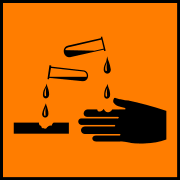|
The shape of the 'pH against volume added' graph differs depending on the type of acid and base. Syllabus referenceReactivity 3.1.13 - pH curves of different combinations of strong and weak monoprotic acids and bases have characteristic shapes and features. (HL)
Guidance
Tools and links
|
|
Strong acid - strong base titrations
Titration curves are the graphs obtained by plotting the pH of the reaction mixture against the volume of base (or acid) added during the titration of either an acid by a base or vice versa.
A typical strong acid - strong base titration curve looks like as follows:
|
|
Weak acid - strong base titration
|
|
Weak base strong acid titration
|
|
Weak acid with a weak base
This mixture cannot be titrated as the change in pH near the equivalence point is too small to allow reliable results.
|
|


